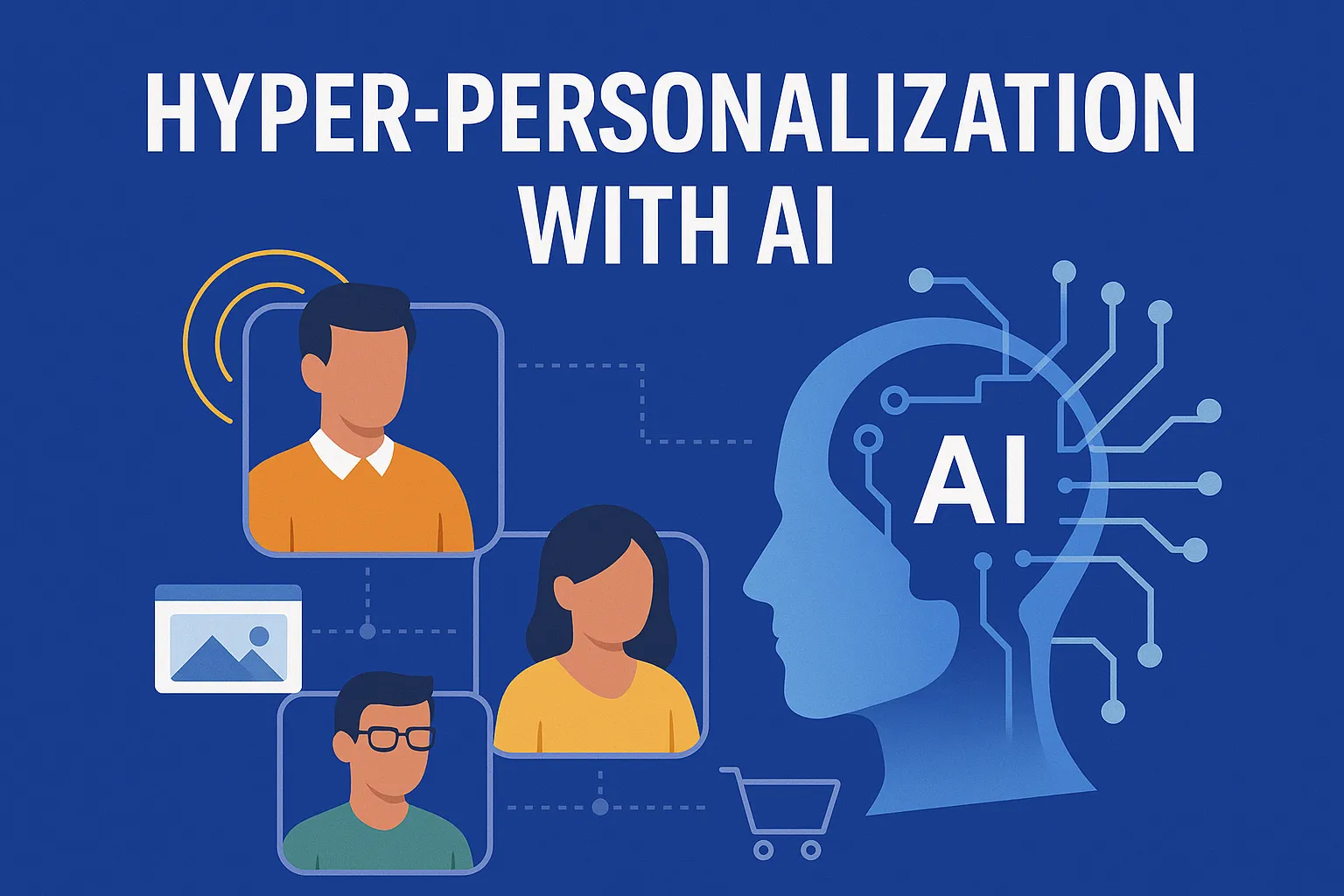Beyond Segmentation: Using AI to Deliver Hyper-Personalized Customer Journeys That Drive Loyalty

For decades, marketers have relied on segmentation — dividing audiences into neat, predictable groups based on demographics or shared interests. It worked well enough in a world where customer interactions were limited and data was scarce. But in today’s digital landscape, that approach feels outdated. Modern consumers expect more. They want brands that understand their preferences, anticipate their needs, and treat them as individuals, not categories. This is where AI-powered hyper-personalization is transforming the game.
Why Traditional Segmentation Falls Short
Segmentation has always been about grouping — organizing customers into clusters like “millennial professionals,” “urban parents,” or “frequent travelers.” But as helpful as these profiles once were, they miss the subtleties of human behavior. Two people in the same demographic group can have wildly different motivations, values, and buying habits. Relying on averages leads to experiences that feel generic and disconnected.
Think about it: you might receive an email promoting hiking gear because you once bought running shoes, or see ads for a product you already own. It’s not offensive — just irrelevant. And in an era of personalized everything, irrelevance kills engagement. That’s why companies are realizing that true connection requires a shift from segmentation to individualization.
From Segmentation to Hyper-Personalization
Hyper-personalization goes beyond inserting a name into an email. It’s about understanding the customer’s intent — what they need in the moment, and why. By leveraging artificial intelligence and machine learning, brands can process enormous amounts of behavioral data in real time: browsing patterns, purchase history, even contextual signals like time of day or device type. The result? Experiences that adapt dynamically, almost instinctively, to each person’s journey.
Imagine visiting an online store and being greeted with content that reflects your taste in style, size, and budget — not because you filled out a form, but because the AI learned your preferences over time. Or picture a streaming service that adjusts its recommendations as your mood or routine changes, learning not only what you like but when and how you like it. That’s the power of hyper-personalization: experiences that feel less like marketing and more like understanding.
The Role of AI: Scaling the Personal Touch
AI is the engine that makes personalization scalable. In the past, brands could personalize experiences manually for a handful of VIP customers. Today, AI makes it possible to extend that same level of care to millions of people simultaneously. It doesn’t just analyze what customers have done — it predicts what they’ll do next. By connecting data points across channels, AI can anticipate needs before the customer even articulates them.
For instance, a fitness brand might notice that a customer’s activity levels have dropped and automatically send motivational tips or a reminder to restock supplements. A travel company could detect that a user has been browsing destinations and offer dynamic packages tailored to their budget and preferred climate. Each interaction feels deliberate, relevant, and — most importantly — human.
Real-World Applications Across Industries
Hyper-personalization is already driving measurable impact across sectors. Retailers are using AI-driven recommendations to boost conversions and increase average order values. Healthcare providers are personalizing patient communication, improving adherence to treatment plans and preventative care. In education, adaptive learning systems use AI to tailor lessons to each student’s progress, helping learners stay motivated and improving outcomes. Even entertainment platforms are enhancing viewer satisfaction by serving content that feels almost intuitively chosen.
The common thread? Relevance. When every touchpoint feels meaningful, customers engage more deeply. And that engagement translates directly into loyalty, advocacy, and long-term value.
Balancing Personalization and Privacy
Of course, the ability to collect and analyze customer data comes with responsibility. Consumers are increasingly aware of how their information is used — and they’re willing to reward brands that handle it with transparency. Hyper-personalization must never come at the expense of privacy. Regulations like GDPR and CCPA are not obstacles to personalization; they’re frameworks that encourage trust-based relationships.
Responsible brands make data use explicit and offer customers control over what’s shared. When customers understand that their data is being used to enhance their experience, not exploit it, they’re far more likely to engage. Trust, in the age of AI, is the ultimate currency.
The Payoff: Loyalty That Lasts
Brands that embrace hyper-personalization don’t just see short-term spikes in engagement; they build lasting relationships. When customers feel understood, they stop comparing prices and start forming bonds. They become advocates — returning not out of habit, but out of trust and connection. The business impact is profound: higher retention, increased lifetime value, and a competitive advantage that’s difficult to replicate.
The move beyond segmentation isn’t just an upgrade in marketing strategy; it’s an evolution in how we think about relationships in the digital era. In the same way AI is reshaping industries, it’s also redefining what it means for brands and customers to connect authentically.
Moving Forward
Hyper-personalization represents the future of customer engagement — and that future is already here. Businesses that act now will not only stand out but set new standards for what customers come to expect from every brand interaction. Those that delay will find themselves stuck in the past, delivering experiences that feel disconnected and impersonal.
AI gives us the tools to listen, understand, and respond to customers in ways that were once impossible. But it’s up to us to use those tools responsibly — with empathy, creativity, and integrity.
Ready to take your personalization strategy to the next level? Lead the WAi helps businesses harness the full potential of AI to deliver meaningful, data-driven experiences that turn customers into lifelong fans.
Apply for early access to Lead the WAi


